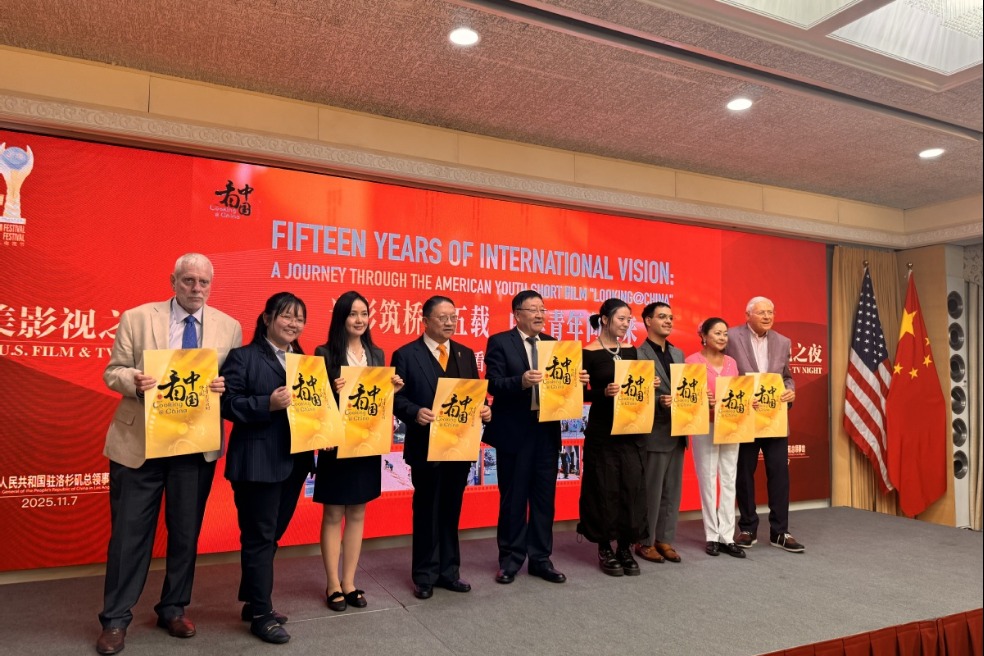China's clean tech exports powering global transition


In a world racing to curb climate change, one country's industrial drive has become a cornerstone of the global energy transition.
In the first seven months of this year, China's exports of electric vehicles, solar panels and batteries — the essential pillars of the new energy economy — surged to $120 billion, including a record $20 billion in August alone, according to data from Ember, an energy think tank based in the United Kingdom.
By comparison, the United States' fossil fuel exports stood at around $80 billion in the first eight months of 2025.
While this is often framed as a geopolitical "win" for China and a "loss" for the West, this perspective misses the bigger, more optimistic picture.
This is far more than an economic milestone. It reflects how China's clean technology sector is helping to decarbonize the global economy, making sustainable energy solutions more affordable, accessible and scalable than ever before.
Perhaps the most profound impact of China's clean tech expansion has been the dramatic fall in renewable energy costs.
Over the past decade, solar panel prices have dropped over 80 percent, driven largely by Chinese manufacturing efficiency, innovation and economies of scale.
For many developing nations across Asia, Africa and Latin America, this cost revolution is transformative. Renewable energy — once a distant aspiration — is now the most economically viable path to sustainable growth. It allows countries to leapfrog outdated fossil-fuel systems and move directly to modern, low-carbon energy grids built on solar power, wind power and energy storage.
In this way, China's exports are democratizing clean energy access, enabling a green leap for emerging economies. Affordable solar panels and batteries are helping communities gain energy independence while advancing both climate resilience and inclusive development.
Meeting global climate targets depends not only on innovation but also on mass deployment — and that is where China's role is indispensable. The ambitions of the Paris Agreement on climate change require a transformation of the world's energy systems at a scale and speed never attempted before.
China's unparalleled manufacturing capacity is the engine powering this transformation. Every solar module, battery pack and electric vehicle exported and installed or used abroad contributes to the displacement of fossil fuels, preventing millions of tons of carbon dioxide emissions over their lifetimes.
By making clean technology cheaper than fossil alternatives, China has effectively aligned economic logic with environmental necessity — a crucial shift for achieving global net-zero goals. The results speak for themselves. In 2024, a record 92.5 percent of all newly installed power capacity worldwide came from renewable sources, with solar and wind power leading the surge. Clean energy now accounts for over 40 percent of global electricity generation, according to "Renewable Capacity Statistics 2025", a report released by the International Renewable Energy Agency in March.
A January report by Bloomberg-NEF noted that China remains the driving force behind this shift, having invested $818 billion in clean energy in 2024 — nearly two-thirds of global growth in the sector.
With national goals of adding 1,200 gigawatts of solar and wind power by 2030 and becoming carbon neutral before 2060, China's domestic transition is redefining not only its economy but also the trajectory of the global energy landscape, as cited in a report in India-based Saur Energy International magazine.
The expansion of clean tech industries has also redefined the nature of global cooperation. As demand for renewable technologies grows, new supply chains are forming — more diverse, interconnected and resilient.
Concepts like "friend-shoring" are not about isolation but about shared responsibility and interdependence. China's position as a manufacturing and innovation hub strengthens this network, providing the scale and reliability that underpin global supply stability.
At the same time, this dynamic encourages healthy competition and rapid innovation. While China's factories deliver current generation technologies at scale, the country is also investing heavily in next-generation research and development — from advanced batteries and green hydrogen to smart grids and digitalized energy systems.
Crucially, these efforts are not confined to within China's borders. Through joint ventures, technology transfer and overseas investment, Chinese companies are helping partner nations build their own green industrial bases. This fosters local employment, skills development and industrial diversification, ensuring that the benefits of the green transition are shared more equitably.
The story of China's clean tech exports is not one of dominance, but of interdependence and shared progress. The true beneficiary of this transformation is the planet itself, as clean, affordable technology becomes the global standard.
China's leadership in scaling and exporting renewable technologies demonstrates its growing role as a responsible global stakeholder, one using its industrial strength and innovation capacity to tackle one of humanity's greatest challenges.
Yet the next phase of the green transition must be deeply collaborative. To sustain momentum and ensure balanced growth, all regions — from Central Asia and Africa to Europe and Latin America — should work toward coordinated investment frameworks to scale green infrastructure and attract private capital; open technology ecosystems that promote transparent standards, fair competition and shared innovation; build regional manufacturing and training hubs that create human capital and reduce supply chain vulnerabilities; and ensure stronger international policy dialogue to align industrial, climate and trade agendas.
By strengthening collaboration rather than competition, the world can turn China's industrial success into a global sustainability success story — where technology, policy and partnership combine to accelerate decarbonization and economic inclusion alike.
China's clean tech exports are more than trade flows; they are also a bridge between economies, technologies and environmental responsibility. They show how one nation's industrial capacity can empower many others to achieve their climate goals more quickly and affordably.
As nations collectively strive toward carbon neutrality, cooperation — not fragmentation — will define success. Through sustained openness, innovation and mutual trust, China and its partners can help shape a future that is not only green, but also inclusive, resilient and shared by all.
The author is former director of the International Institute of Central Asia, former secretary-general of the Shanghai Cooperation Organization and former foreign minister of Uzbekistan.
The views do not necessarily reflect those of China Daily.
































